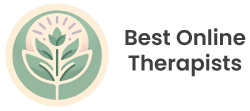Self-Help Techniques: Simple CBT Techniques You Can Try at Home
Cognitive Behavioral Therapy (CBT) is a widely used psychological treatment that helps individuals manage their thoughts, emotions, and behaviors. While working with a licensed therapist is often recommended, there are several self-help techniques you can try at home to improve your mental well-being. These techniques can be particularly beneficial for those looking to manage anxiety, depression, stress, and other common mental health issues. This article will explore simple and effective self-help techniques rooted in CBT that you can incorporate into your daily life.
Understanding Self-Help Techniques in CBT
Self-help techniques are practical tools and strategies that individuals can use independently to manage their mental health. In the context of CBT, these techniques often involve identifying and challenging negative thought patterns, developing healthier behaviors, and improving emotional regulation. The following sections will cover some of the most accessible and effective self-help techniques.
Cognitive Restructuring
Cognitive restructuring is a foundational technique in CBT that involves identifying and challenging irrational or negative thoughts. This process helps individuals develop a more balanced and realistic perspective.
1. Identify Negative Thoughts: Start by paying attention to your thoughts, especially during stressful situations. Write down any negative thoughts you notice.
2. Challenge the Thoughts: Examine the evidence for and against these thoughts. Are they based on facts or assumptions? Are there alternative explanations?
3. Replace with Balanced Thoughts: Replace negative thoughts with more balanced and realistic ones. For example, if you think, “I’ll never succeed,” replace it with, “I’ve faced challenges before and can work through this one too.”
This self-help technique can be particularly useful for those dealing with anxiety and depression, as it helps reduce the intensity of negative emotions by changing the underlying thought patterns.
Behavioral Activation
Behavioral activation involves engaging in activities that bring joy, satisfaction, or a sense of accomplishment. This self-help technique is especially useful for individuals experiencing depression.
1. Schedule Pleasant Activities: Make a list of activities you enjoy or used to enjoy. Schedule time for these activities in your daily routine, even if you don’t feel motivated at first.
2. Start Small: Begin with simple tasks, like taking a short walk, reading a book, or listening to music. Gradually increase the complexity and duration of these activities.
3. Reflect on the Experience: After engaging in these activities, reflect on how you felt before, during, and after. This can help reinforce the positive impact of staying active and engaged.
Behavioral activation helps break the cycle of inactivity and negative mood, promoting a more positive and fulfilling daily life.
Mindfulness and Relaxation Techniques
Mindfulness involves being present in the moment and observing thoughts and feelings without judgment. It’s a powerful self-help technique for managing stress and anxiety.
1. Mindful Breathing: Focus on your breath as you inhale and exhale. Notice the sensation of the air entering and leaving your body. This practice can help calm your mind and reduce stress.
2. Progressive Muscle Relaxation: Gradually tense and then relax each muscle group in your body, starting from your toes and working up to your head. This technique can help reduce physical tension and promote relaxation.
3. Mindful Observation: Take a few moments to observe your surroundings. Notice the sights, sounds, and smells around you. This practice can help ground you in the present moment and reduce anxiety.
These self-help techniques can be incorporated into your daily routine to enhance mindfulness and relaxation.
Journaling
Journaling is a simple and effective self-help technique that allows you to express your thoughts and emotions. It can also help you track your progress and identify patterns in your thinking and behavior.
1. Daily Reflection: Set aside a few minutes each day to write about your experiences, thoughts, and feelings. This can help you process emotions and gain insights into your mental state.
2. Gratitude Journal: Each day, write down three things you’re grateful for. Focusing on positive aspects of your life can improve your mood and overall outlook.
3. Thought Records: Use thought records to track specific negative thoughts, the situations that trigger them, and the evidence for and against these thoughts. This can help you practice cognitive restructuring.
Journaling can be a therapeutic practice that enhances self-awareness and emotional regulation.
Self-Compassion Practices
Self-compassion involves treating yourself with kindness and understanding, especially during difficult times. It’s a crucial self-help technique for building resilience and emotional well-being.
1. Self-Compassionate Statements: Practice speaking to yourself in a kind and supportive way. For example, instead of saying, “I’m such a failure,” say, “It’s okay to make mistakes; I’m learning and growing.”
2. Mindful Self-Compassion Exercises: Engage in exercises that combine mindfulness and self-compassion, such as the “Self-Compassion Break.” Acknowledge your suffering, remind yourself that suffering is a common human experience, and offer yourself kindness.
3. Compassionate Letter Writing: Write a letter to yourself from the perspective of a compassionate friend. Offer words of support and understanding, as you would to someone you care about.
Self-compassion practices can help reduce self-criticism and promote a more positive self-image.
Conclusion
Incorporating these self-help techniques into your daily life can significantly improve your mental well-being. While these techniques can be beneficial, it’s important to remember that they are not a substitute for professional therapy. If you’re struggling with persistent or severe mental health issues, consider reaching out to a licensed therapist for support.
To explore more self-help techniques and professional therapy options, you can find an online therapist who can guide you on your journey to better mental health.
**Sources:**
1. American Psychological Association – Cognitive Behavioral Therapy
2. Mayo Clinic – Cognitive Behavioral Therapy
Must Read News
The Benefits of Couples Therapy
The Benefits of Couples Therapy: Strengthening Relationships Through Communication and Understanding Maintaining a healthy and [...]
5 Ways to Know If You or a Loved One Need Therapy
5 Ways to Know If You or a Loved One Need Therapy In today’s world, [...]
Talk Therapy: What It Is and How It Helps
Talk Therapy: What It Is and How It Helps Talk therapy, also known as psychotherapy, [...]
Group Therapy Near Me: The Power of Collective Healing
Group Therapy Near Me: The Power of Collective Healing Group therapy is an increasingly popular [...]
What is Cognitive Behavioral Therapy
What is Cognitive Behavioral Therapy? Cognitive Behavioral Therapy (CBT) is a widely recognized and evidence-based [...]
The Value of Teletherapy vs. Face-to-Face Therapy: Choosing the Right Fit for You
The Value of Teletherapy vs. Face-to-Face Therapy: Choosing the Right Fit for You The landscape [...]
Our Method
We use a combination of consumer reviews and overall scores from multiple online platforms such as Forbes, Trustpilot, Google, Indeed, Glassdoor, and others to form an overall composite score that shows how well a company not only treats its customers but how they treat their employees as well. Our multiplatform composite score prevents companies from gaming one review-generating platform or another for good scores. We believe this method provides the best overall social proofing.

